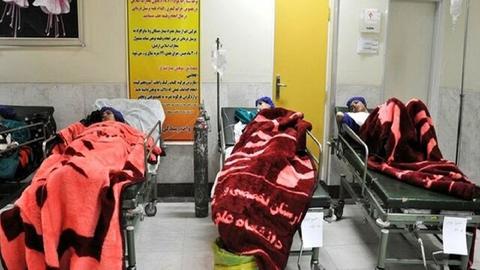RFL/RE – Tensions continued in Iran as the number of girls’ schools affected by a wave of illnesses increased and government critics questioned official actions, following protests by the parents of affected students.
Female students reportedly fell ill in at least 33 cities across 17 Iranian provinces on March 4, as speculation swirled over what some allege are months of noxious gas attacks that have coincided with a crackdown on unprecedented protests over the death in custody of a young woman in September.SEE ALSO:Parents Of Girls Afflicted With Mysterious Illness Stage Protests Amid Reports Of Fresh Cases
An informed source at a girls’ primary school in the city of Islamshahr, south of Tehran, told RFE/RL’s Radio Farda that fears over the incidents had led the overwhelming majority of students there to stay home.
Only about 10 of nearly 600 students attended classes on March 4, the source said.
A clerics’ group in the Shi’ite holy city of Qom that is close to Iran’s reformist movement alleged in a March 4 statement that the apparent attacks were aimed at “creating terror to prevent girls from studying” and to “create an atmosphere of panic and public fear.”
Without citing any evidence, it accused an extremist movement of responsibility for “poisonings.”
The Qom Seminary Teachers and Researchers Association further warned that attacks on students “will only add to society’s accumulated dissatisfaction with the government” brought on by unemployment, government inefficiencies, and a “crisis of legitimacy of the system.”
The association acknowledged that responsibility for the alleged poisonings “has not yet been determined” but said “contradictory and inconsistent claims made by some official authorities” are exacerbating the problem.
The illnesses could not be independently verified.
The first report of suspected mass illness came in Qom in November, when 18 schoolgirls were taken to a hospital after complaining of symptoms that included nausea, headaches, coughing, breathing difficulties, heart palpitations, and numbness and pain in their hands or legs.
Officials have been unable to pinpoint the cause of that and many of other subsequent instances of purported illness among female students.
Protests by parents were staged outside education facilities in at least in four areas of Tehran and in the cities of Isfahan and Ardabil on March 4, RFE/RL’s Radio Farda reported.
Video footage posted on social media purported to show protesters in Tehran shouting anti-government slogans, including, “Our enemy is right here, although they say it is America,” and, “Spraying acid and poisoning are both crimes.”
The muted response by authorities has prompted some to accuse the government of purposely “poisoning” students, who have been at the forefront of months of anti-government protests — the biggest threat to the Islamic leadership since the 1979 revolution.
Iran has been roiled by unrest since the September 16 death of 22-year-old Mahsa Amini while in police custody for allegedly wearing a hijab, or head scarf, improperly in violation of the religious leadership’s strict dress code.
 Shabtabnews In this dark night, I have lost my way – Arise from a corner, oh you the star of guidance.
Shabtabnews In this dark night, I have lost my way – Arise from a corner, oh you the star of guidance.



